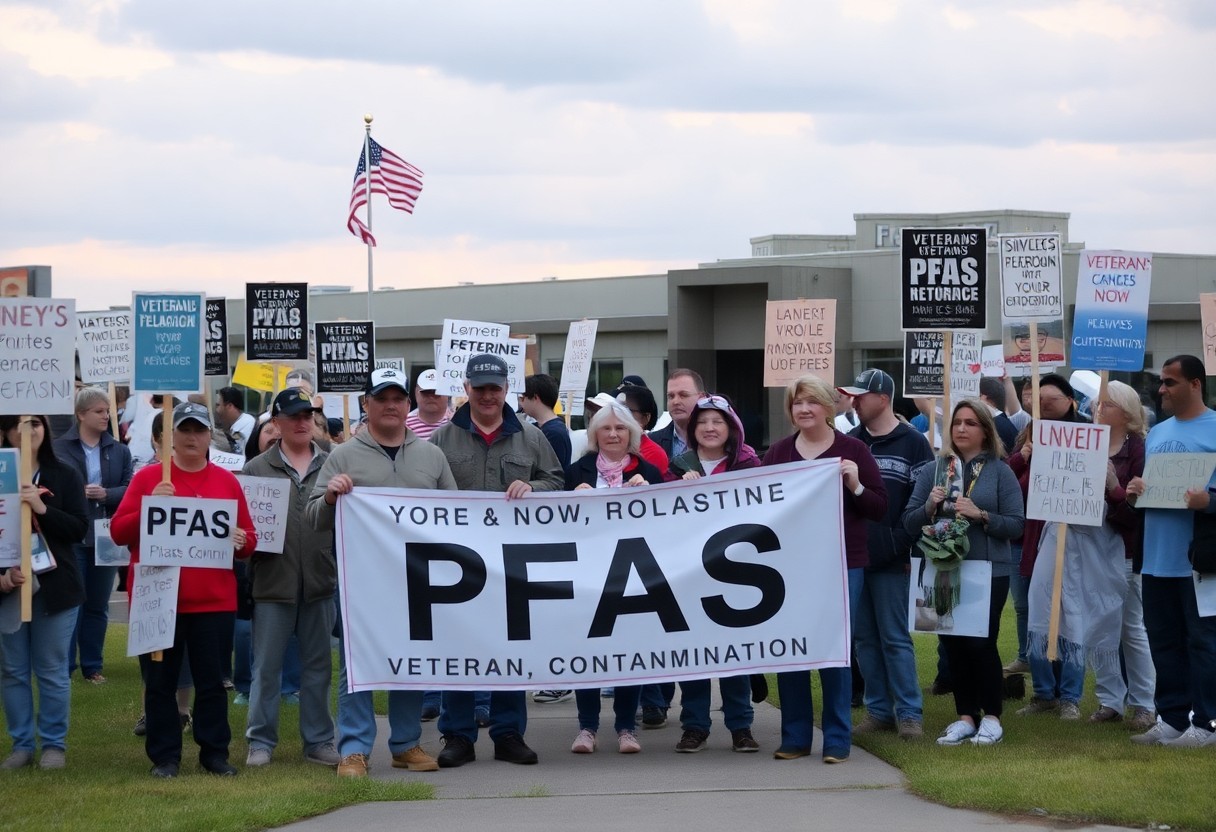California has become a battleground for PFAS lawsuits, as numerous communities face severe water contamination issues linked to these harmful chemicals. You may be unaware that per- and polyfluoroalkyl substances (PFAS) are persistent in the environment and your drinking water, posing significant health risks. This post will guide you through the hotspots in California where these contamination problems are most prevalent, and how they impact your health and safety. Understanding these legal challenges is vital for protecting your well-being and advocating for cleaner water in your community.
Understanding PFAS
While understanding PFAS is vital in addressing its widespread impact, you must recognize their unique chemical properties. PFAS, or per- and polyfluoroalkyl substances, are synthetic compounds utilized in various consumer products for their stain, water, and grease-resistant qualities. Your awareness of these chemicals will help you understand their implications in environmental contamination.
Definition and Types
Across the spectrum of PFAS, you will find various types, each differing in their chemical structure and effects. These compounds can be categorized as:
| PFOS | Perfluorooctane sulfonic acid |
| PFOA | Perfluorooctanoic acid |
| PFHxS | Perfluorohexane sulfonic acid |
| PFNA | Perfluorononanoic acid |
| F53B | GenX technology |
After identifying these types, you can better understand their potential risks and effects on human health and the environment.
Health Effects of PFAS Exposure
Definition of PFAS exposure often reveals numerous health implications. Understanding these risks is vital for your well-being as consuming contaminated water or products leads to potential adverse effects.
Due to your potential exposure to PFAS, you should be aware that these chemicals have been linked to significant health issues, including immune system dysfunction, hormonal disruption, and increased cancer risk. Research indicates they can affect liver function and lipid levels, which may contribute to obesity and high blood pressure. Staying informed about these connections allows you to make better choices regarding water safety and product usage.
Sources of PFAS Contamination
If you are concerned about water quality, you should be aware that PFAS contamination stems from various sources, which can significantly impact drinking water. Understanding these sources can help you identify potential risks in your area and advocate for cleaner water practices.
Industrial Sites
On many industrial sites, the manufacturing of products that contain PFAS, such as water-repellent fabrics and firefighting foams, leads to chemical runoff and soil contamination. These sites often pose a serious risk to nearby water supplies, affecting both human health and local ecosystems.
Agricultural Runoff
PFAS contaminants can also infiltrate water sources through agricultural runoff. This occurs when fertilizers and pesticides containing these chemicals are applied to crops, leading to their absorption into soil and water systems. Irrigation practices can exacerbate this issue, allowing PFAS to travel into rivers and lakes that serve as drinking water for communities.
A significant concern is that PFAS can persist in the environment, resulting in long-lasting contamination of water supplies. As these substances accumulate in soil and aquatic ecosystems, they can expose you and your family to potential health risks. If you depend on local water sources for agriculture or drinking, it’s vital to stay informed about regulations and testing procedures to safeguard your health and that of your community.
California’s Legal Framework
The legal landscape surrounding PFAS in California is designed to address the urgent matter of water contamination. A combination of state regulations, legislative actions, and judicial rulings shapes how both public health and environmental interests are protected. Understanding this framework is imperative for recognizing your rights and the ongoing efforts to mitigate PFAS exposure in your community.
Current PFAS Regulations
Legal standards currently in place focus on monitoring and regulating perfluoroalkyl and polyfluoroalkyl substances (PFAS) in drinking water. The California Department of Public Health has established a maximum contaminant level (MCL) for specified PFAS compounds, which assists in maintaining safe water supply standards for you and your community.
Recent Legislative Developments
Across California, lawmakers are actively working to strengthen regulations surrounding PFAS. New bills are emerging that aim to enhance testing protocols and impose stricter limitations on PFAS in water systems across the state. These initiatives reflect an increasing recognition of the hazards posed by these chemicals and a growing commitment to environmental protection.
Framework laws being proposed in California demonstrate a proactive approach towards PFAS contamination. Recent bills aim to establish mandatory testing requirements for public water systems and provide financial resources for remediation efforts. Additionally, they propose penalties for companies that fail to comply with regulations, signaling a shift towards accountability and greater awareness of the harmful effects of these substances. By staying informed about these developments, you empower yourself and your community in the fight against PFAS pollution.

Major Lawsuits in California
Keep an eye on the ongoing PFAS lawsuits in California, as they highlight significant issues surrounding water contamination. These high-profile cases are paving the way for regulatory change and holding companies accountable for their impact on water sources.
Case Studies Overview
With numerous lawsuits emerging, here’s a brief overview of key case studies related to PFAS contamination in California:
- City of Redding vs. 3M: Allegations of widespread water contamination affecting over 90,000 residents.
- Los Angeles County vs. DuPont: Litigations involving financial damages for treating PFAS in localized water systems.
- City of Santa Monica: Successful settlement of $22 million for clean water initiatives due to PFAS pollution.
- Firefighting foam exposure lawsuits: Involving multiple fire departments across 45 cities, citing health risks linked to PFAS.
Impact on Affected Communities
Across California, communities face serious repercussions from PFAS contamination, including health issues and economic burdens. Residents often experience increased anxiety regarding health risks associated with drinking water and groundwater. These issues can lead to diminished property values and overwhelming costs of remediation.
Affected areas confront devastating impacts from PFAS exposure, causing concerns about long-term health effects such as cancer, decreased fertility, and hormonal disruptions. Alongside health risks, the contamination affects local economies, as communities must allocate resources towards expensive water treatment solutions. These circumstances highlight the necessity for continued advocacy and legal action to ensure you receive safe, clean water. As awareness rises, residents can empower themselves to demand accountability and effect change in environmental safety standards.
Water Contamination Hotspots
Unlike other states, California has identified numerous water contamination hotspots due to the pervasive presence of PFAS chemicals. These sites often include military bases, industrial locations, and areas near firefighting training facilities, where the use of foam has led to significant groundwater and surface water pollution. It is imperative for you to be aware of these hotspots, as they can greatly impact your community and health.
Identified Locations
About the identified locations, several regions in California have been flagged for their elevated levels of PFAS contamination. Notable hotspots include areas around former military installations, airports, and industrial sites, which have seen direct discharges of PFAS-laden water into local aquifers and waterways. Understanding where these locations are can help you stay informed about potential risks in your area.
Efforts for Remediation
Beside acknowledging the contamination challenges, California is actively pursuing various remediation strategies to combat PFAS pollution. State agencies are implementing advanced treatment technologies and monitoring programs that aim to reduce PFAS levels in affected water supplies. Your awareness of these efforts can aid in pushing for accountability and involvement in local initiatives.
Due to the increasing awareness of PFAS-related health risks, California has launched numerous efforts to implement remediation strategies at contaminated sites. These initiatives include collaborating with environmental organizations, employing cutting-edge filtration systems, and conducting extensive water testing. Moreover, state officials are working with affected communities to raise awareness and ensure access to safe drinking water. Staying informed about these remediation efforts empowers you to advocate for a safer environment and sustainable water resources.
The Role of Environmental Advocacy
All around California, environmental advocacy groups have become integral to addressing PFAS contamination. These organizations not only raise awareness about the dangers posed by PFAS in water but also push for regulatory changes that protect public health and the environment. Through education and activism, they empower communities to demand cleaner water and hold polluters accountable.
Key Organizations Involved
Role of advocacy organizations is vital in spearheading initiatives to combat PFAS contamination. Groups like the Environmental Working Group and Clean Water Action provide resources, conduct research, and mobilize communities to address water contamination issues. Through their efforts, they ensure that your voice is heard and that legislative changes are made to safeguard your water supply.
Community Engagement and Advocacy
Before tackling PFAS concerns in your area, it’s imperative for you to understand the power of community engagement. Local advocacy plays a significant role in influencing policy and raising awareness about water contamination risks. As a community member, your involvement can drive change and prompt local officials to take action.
Engagement often begins with fostering strong connections with your neighbors and local organizations focused on environmental issues. By participating in town hall meetings, joining local clean-up efforts, or sharing information on social media, you can shine a light on PFAS contamination in your community. Your voice has the power to inform others about potential health risks, motivate your community, and advocate for safe drinking water. Staying informed and active in local discussions not only helps protect your health but also contributes to a larger movement that holds industries accountable for their actions.
To wrap up
To wrap up, understanding the challenges posed by PFAS-related water contamination in California is imperative for you as a resident and advocate for clean water. As lawsuits unfold in hotspots across the state, staying informed about your water quality and local regulations empowers you to protect your health and community. Engaging in discussions and supporting policies aimed at regulating these harmful substances equips you with the knowledge needed to contribute to a safer environment for yourself and future generations.



















